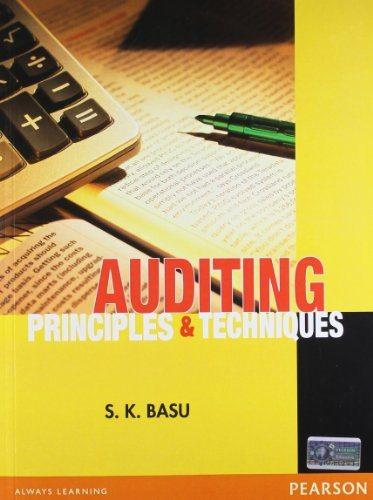Answered step by step
Verified Expert Solution
Question
1 Approved Answer
The Three stages of yesterday Stages of calculation of dilutive EPS. Creating in chaos! The CASE An interesting story of enlightenment is how Paul McCartney
The Three stages of yesterday
Stages of calculation of dilutive EPS. Creating in chaos!
The CASE
An interesting story of enlightenment is how Paul McCartney of The Beatles composed the song Yesterday As the legend goes, he was sleeping in his family house on Wimpole Street in London when a dream with one of the best melodies enlightened him and he was struck by the beauty of that melody. He quickly hopped on to his piano by his bedside and played the chords just so he may not forget them. This is the genesis of the best pop song ever composed.
Another enlightenment is just about to dawn on John. John has been a successful businessperson, and he owes much of his success to his acuities and prowess with numbers and foresight. He has a passion for numerical creativity and has been able to bend his back to show the best results for his company in the latest financial statement till yesterday. Yesterday, an auditor from Deloitte his auditor called him and told him that he needs to relook at the calculation of EPS and Diluted EPS in his statement of comprehensive income. The auditor was confident that in his calculations the anti dilutive effect has not been shown and calculated correctly. This has caused a lot of concern for John who has, hitherto, been untouchable when it comes to disclosures and computations.
So here is how the numbers look like:
Earnings Euro
Profit from continuing operations attributable to the parent entity:
Less dividends on preference shares:
Profit from continuing operations attributable to ordinary equity holders of the parent entity:
Loss from discontinued operations attributable to the parent entity:
Profit attributable to ordinary equity holders of the parent entity:
Ordinary shares outstanding:
Average market price of one ordinary share during year:
Potential Ordinary Shares
Options: with exercise price of
Convertible preference shares: shares with a par value of entitled to a cumulative dividend of per share. Each preference share is convertible to two ordinary shares
convertible bonds: Nominal amount Each bond is convertible to ordinary shares. There is no amortisation of premium or discount affecting the determination of interest expense.
Tax rate:
Increase in Earnings Attributable to Ordinary Equity Holders on Conversion of Potential Ordinary Shares
Options:
Increase in earnings: Increase in earnings Euro
Incremental shares issued for no consideration
x : Increase in number of ordinary shares and Earnings per incremental share Euro
Convertible preference shares
Increase in earnings x x Increase in earnings Euro
Incremental shares x Increase in number of ordinary shares and Earnings per incremental share Euro
convertible bonds
Increase in earnings
x x Increase in earnings Euro
Incremental shares x Increase in number of ordinary shares and
Earnings per incremental share Euro
The order in which to include the dilutive instruments is:
Options
convertible bonds
Convertible preference shares
Looking at these numbers John cant help but think that till yesterday he was overconfident and over the moon, but his stages of over confidence are about to be consumed by the stages of calculation of dilutive EPS. John wonders again, what his EPS and dilutive EPS calculations should be as per the accounting standards?
Case Questions:
Show the calculations of the dilutive elements of his EPS for each of the potential ordinary shares in the order mentioned in the case study? Use Options
Show the final basic EPS and dilutive EPS for the Profit from continuing operations attributable to ordinary equity holders of the parent entity? Use Convertible bonds
Why do you think that in case an entity has a number of different potential ordinary shares and in the determination of whether they are dilutive and for them to be included in the calculations each issue or series of potential ordinary shares are to be considered in the sequence from the most to the least dilutive. What is the logic of this rule as per IAS Which paragraph in IAS illustrates this point?
Step by Step Solution
There are 3 Steps involved in it
Step: 1

Get Instant Access to Expert-Tailored Solutions
See step-by-step solutions with expert insights and AI powered tools for academic success
Step: 2

Step: 3

Ace Your Homework with AI
Get the answers you need in no time with our AI-driven, step-by-step assistance
Get Started


